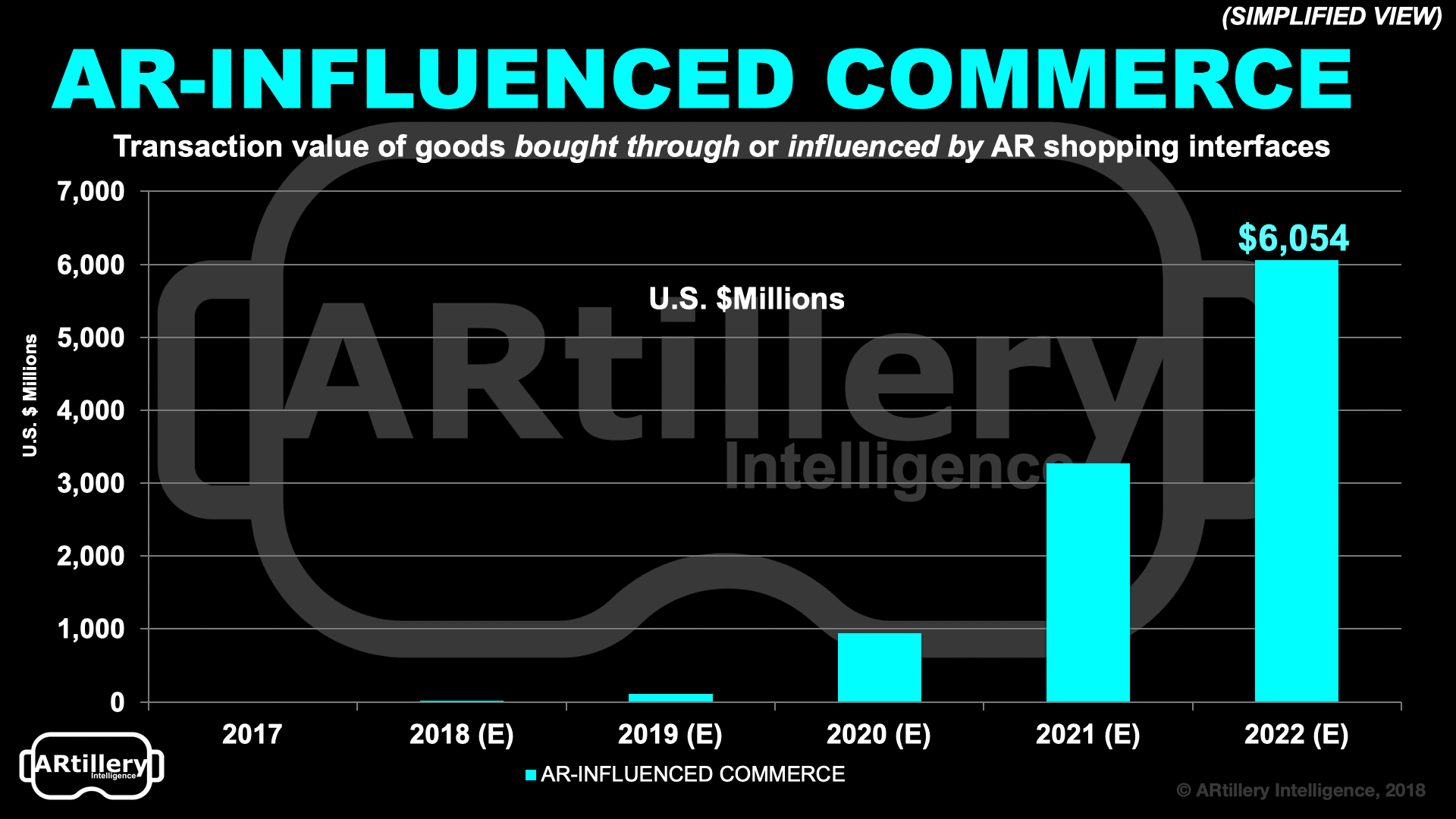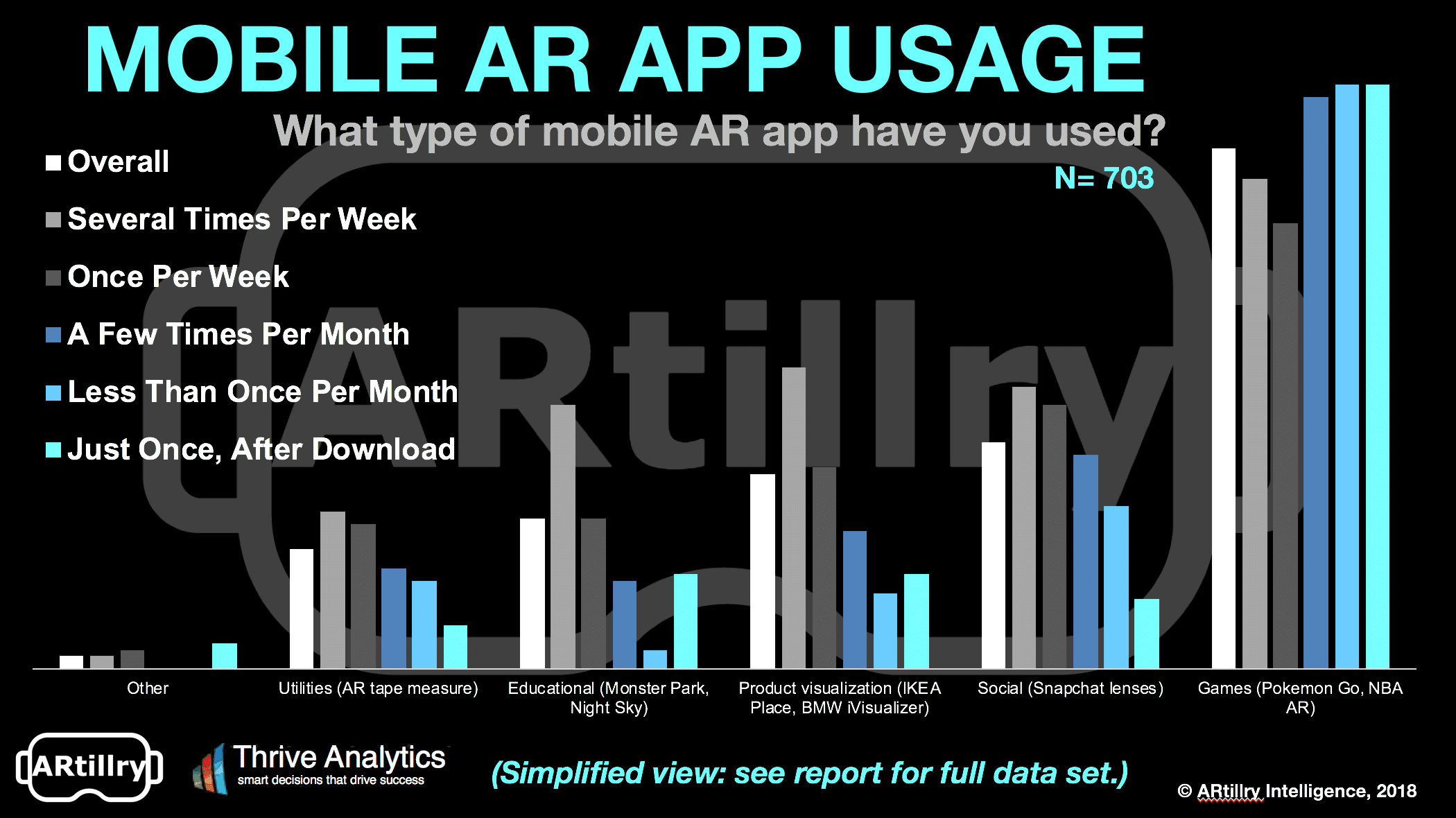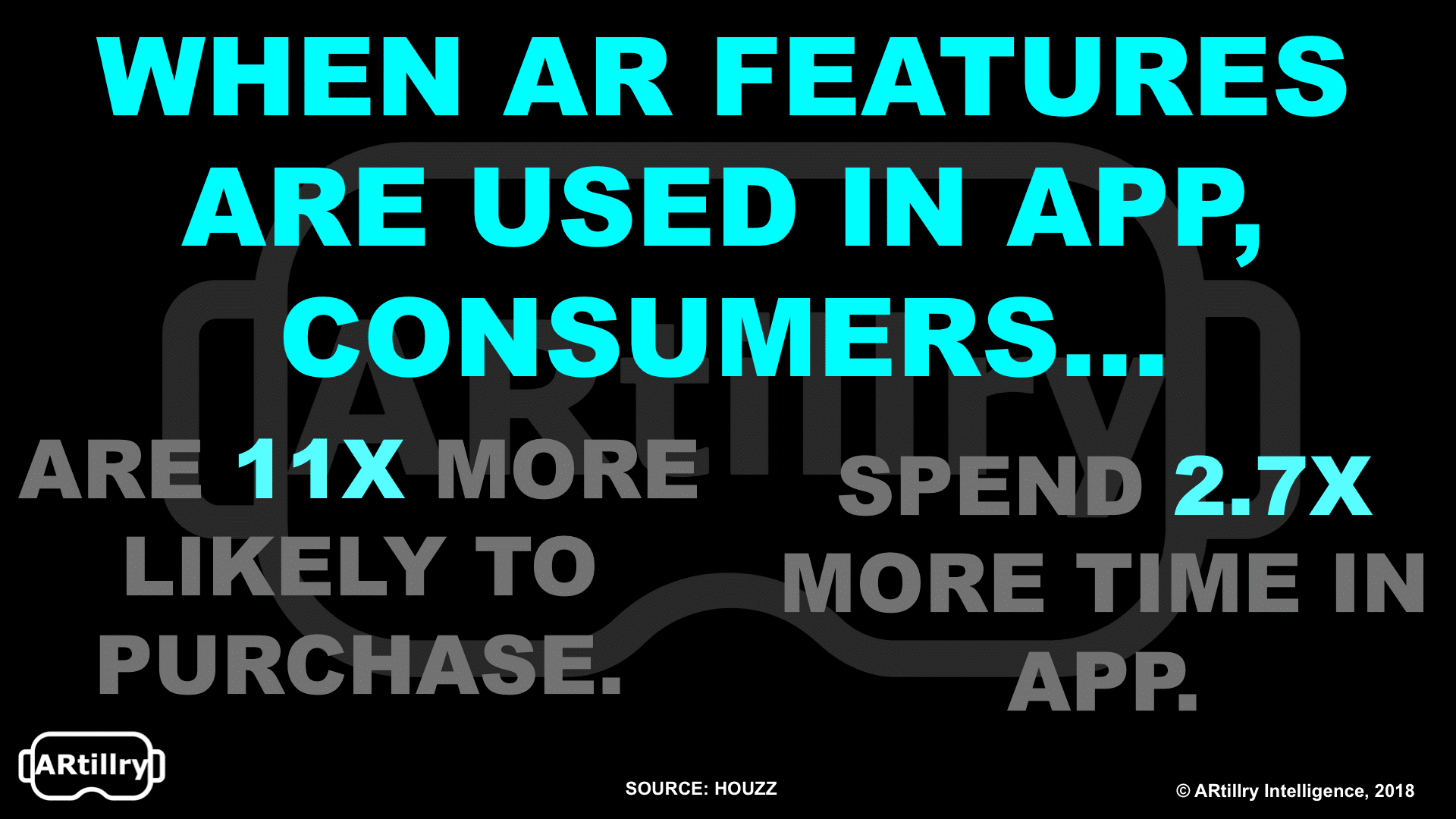
This post is adapted from ARtillery Intelligence’s latest report, AR Commerce: Monetization Comes Into View. It includes some of its data and takeaways. More can be previewed here and subscribe for the full report.
Many questions surround the sometimes-overhyped AR sector. The biggest is how it will make money. There are several answers to that question including enterprise productivity, AR advertising, gaming (e.g. in-app purchases) and others we’ve examined in past reports.
But the area of AR monetization that’s perhaps most logical – and already underway – is commerce. This is the segment of AR in which graphical overlays inform consumers while shopping. It provides contextual product information to inform and incentivize purchases.
Setting this apart from AR advertising, AR commerce is the next step in the consumer journey involving product visualization that includes the ability to buy a given product. Specifically, we project that $6.1 billion in consumer goods will be purchased through such interfaces by 2022.
Picking up where we left off last week in looking at visual search, we’ll dive deeper on AR product visualization, another important “flavor” of AR commerce. Use cases and business models are already materializing as consumer brands are driven to offer the ability to “try before you buy.”

Part II. Using AR to Visualize
Moving beyond AR’s use in visual search, what about its other modality: product visualization? This is all about using AR as a way to anchor 3D graphics in one’s space to simulate the placement of a corresponding product. This is done to see if something fits (in size and in style).
There are a few places that AR product visualization is being applied, which indicate the product categories where it’s most conducive. The first is on one’s face or body. This is done through face filters and lenses. It involves activities like trying on cosmetics or fashion items like sunglasses.
This is where AR commerce overlaps with AR advertising. As we’ve examined, brands like Michael Kors are buying Facebook News Feed ads that let users virtually try on sunglasses. Where it transitions into commerce is the ability to buy the product within the same experience.

Similarly, home goods are a leading product category in AR commerce. Due to the size, shipping costs and need to see large items like a couch, AR visualization has solved prevalent pain points. Seeing if a couch fits in your living room before ordering it online can save lots of headaches.
And these theoretical benefits are proving out. In ARtillery Intelligence’s AR consumer survey with Thrive Analytics,* product visualization had a high share of users among AR app categories that return to use it several times per week. This frequency metric will be a key success factor for AR.
These consumer benefits translate also to online retailer benefits. Amazon sees greater conversions and basket sizes from its popular AR View feature. It also sees fewer product returns, due to more informed buyers. That solves a big pain point: costly returns on large items like TVs.

But the most impressive performance indicators so far come from online furniture retailer Houzz. It reports in-app AR furniture visualization have boosted conversions 11x and spend level 2.7x. And this comes from a meaningful sample of a million customer interactions with its AR feature.
Other ROI proof can be seen from BMW (cars) and RoOomy (furniture), each of which are detailed in case studies later in this report. Bottom line: AR visualization can deepen relationships with customers, thereby bringing AR from novelty to actionable and trackable commerce.
See more details about this report or continue reading here. *Data above represent wave I of the consumer survey. Wave II will be published next month.
For deeper XR data and intelligence, join ARtillery PRO and subscribe to the free AR Insider Weekly newsletter.
Disclosure: AR Insider has no financial stake in the companies mentioned in this post, nor received payment for its production. Disclosure and ethics policy can be seen here.
Header image credit: IKEA
